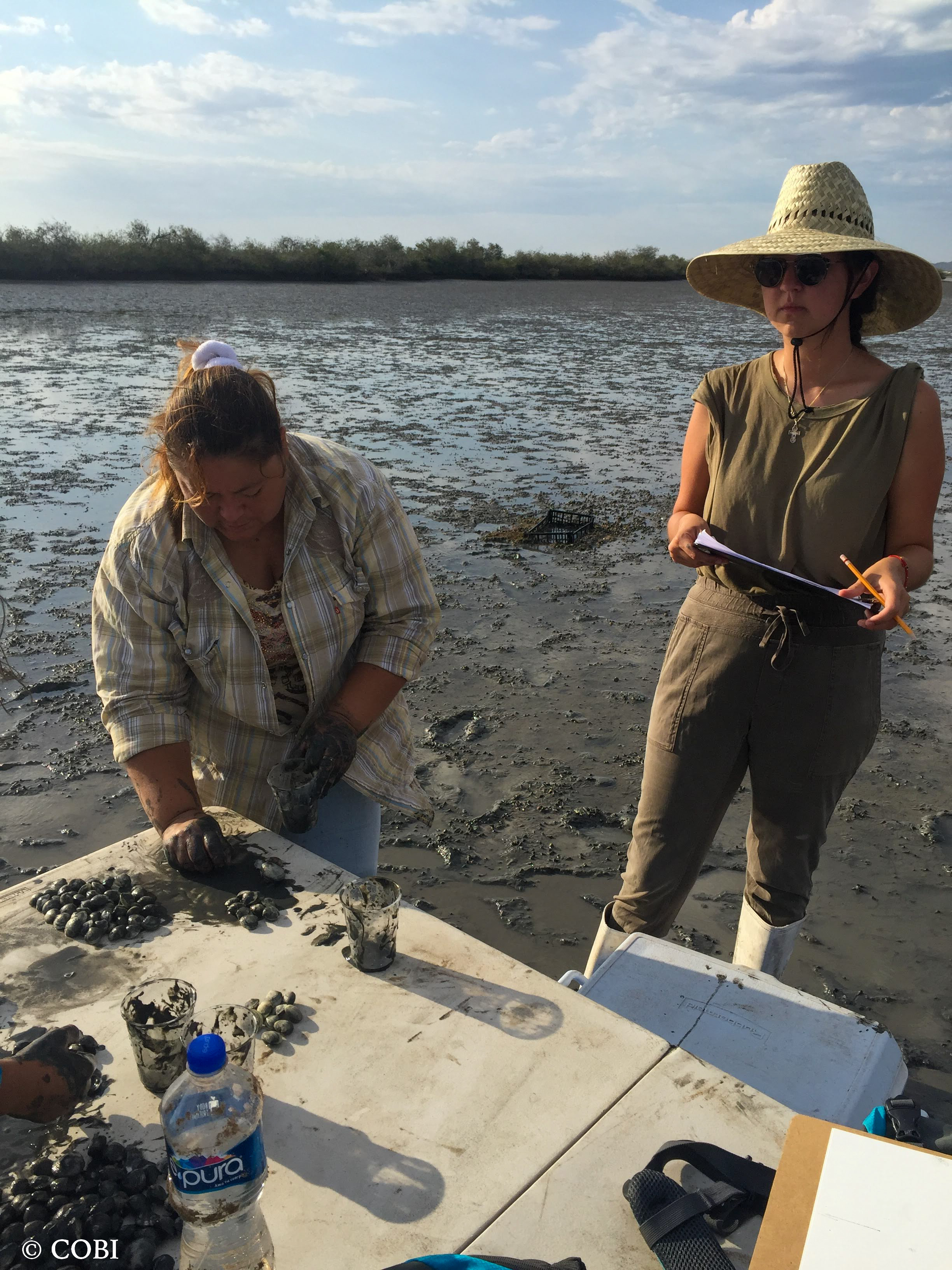


The collection of fisheries data is one of the commitments acquired when there is a right of access to the resource, as well as when working under a sustainable fisheries scheme. In order to demonstrate that the fishery is developing its activities under this scheme, data and information are obtained by implementing a fishery monitoring system.
The clam and tripe fishery had been characterized by a sustainable fishery, however, there was no data systematically captured to document the activities carried out in the long term. To address this need, COBI and community partners jointly implemented a fishery monitoring program. With the fishermen and fisherwomen, a logbook was designed with data such as date, time, boat, diver, target species, fishing site, number of organisms, size of organisms collected, income and expenditure. All the members of the cooperatives and fishing technicians were trained to fill out the fishing logs and one person per fishing cooperative was responsible for recording the data.
- Adapt, with the fishing communities, the design of fishery monitoring based on community and fishery conditions, e.g., agree with fishermen whether it will be conducted on board the vessel or on land.
- Train fishermen and fisherwomen in data collection for logbooks, including clam and callus lengths, as well as database management.
- Coordination with fishermen and fisherwomen for the design and implementation of fishery monitoring is essential for the information recorded to be effective and for them to be related to the logbook format.
- It is recommended to include the authorities in the design of fishery monitoring, since this information is required as part of the duties derived from the permits or concessions; it is also very valuable to know the state of the fisheries.
- It is important that fishermen and fisherwomen know the results generated with the analysis of the data recorded in the fishing logs. This reinforces the importance of generating information.